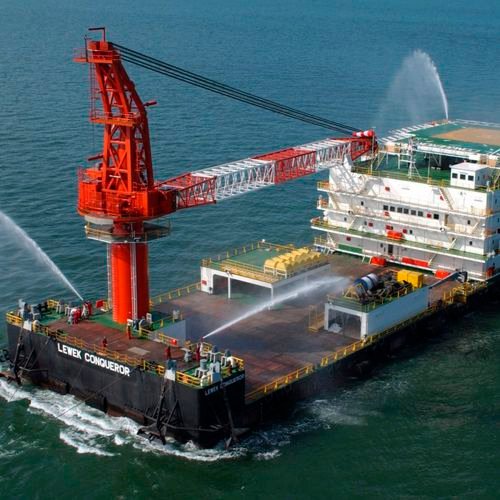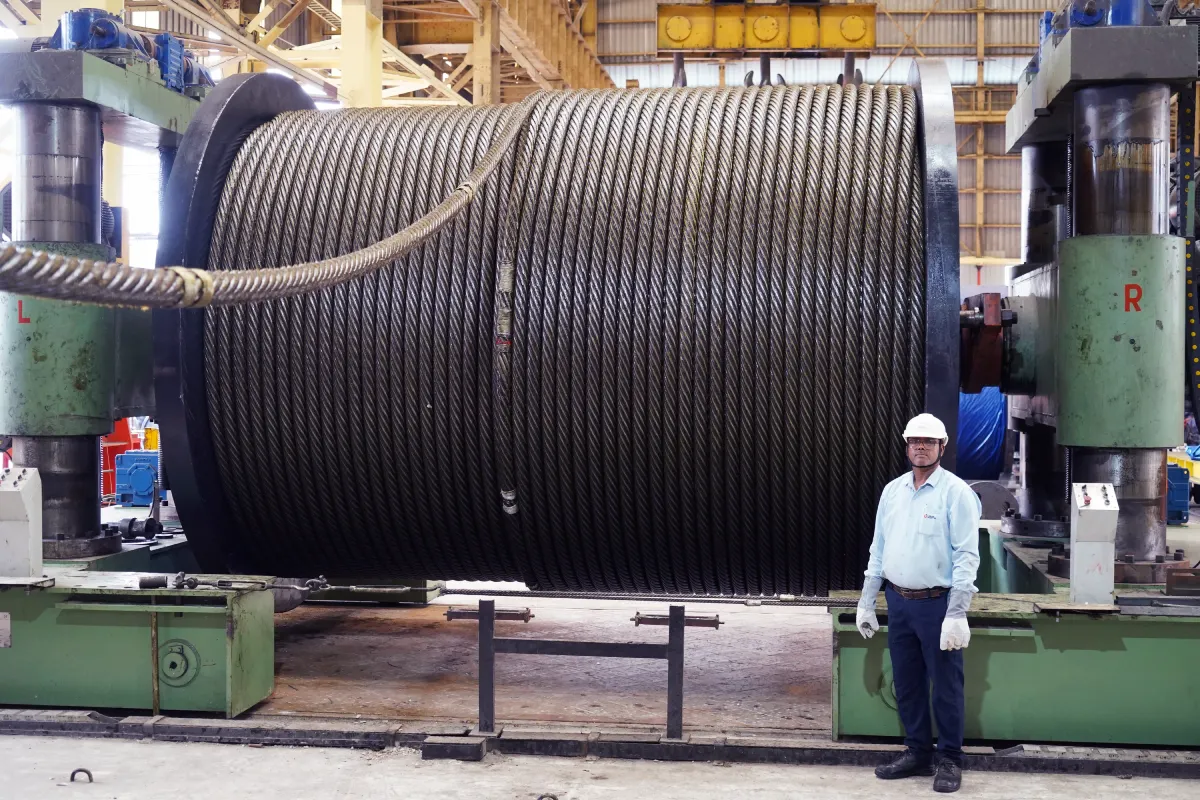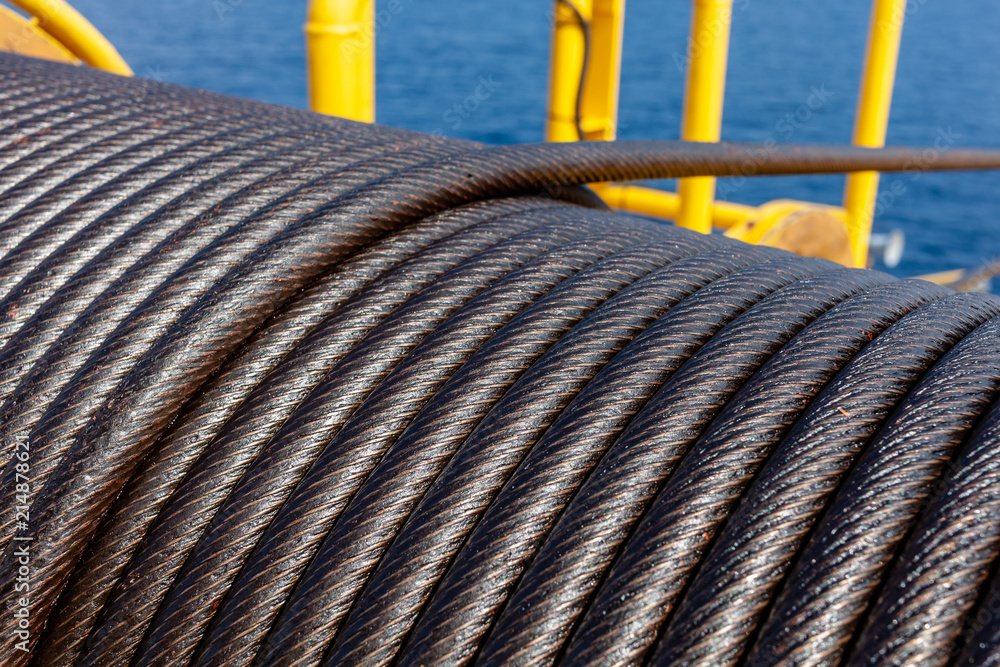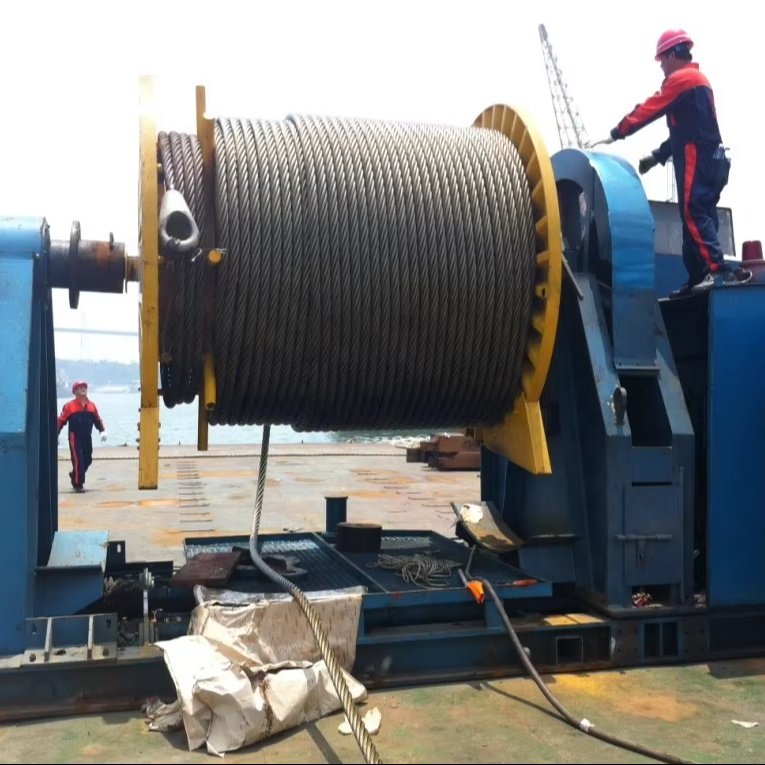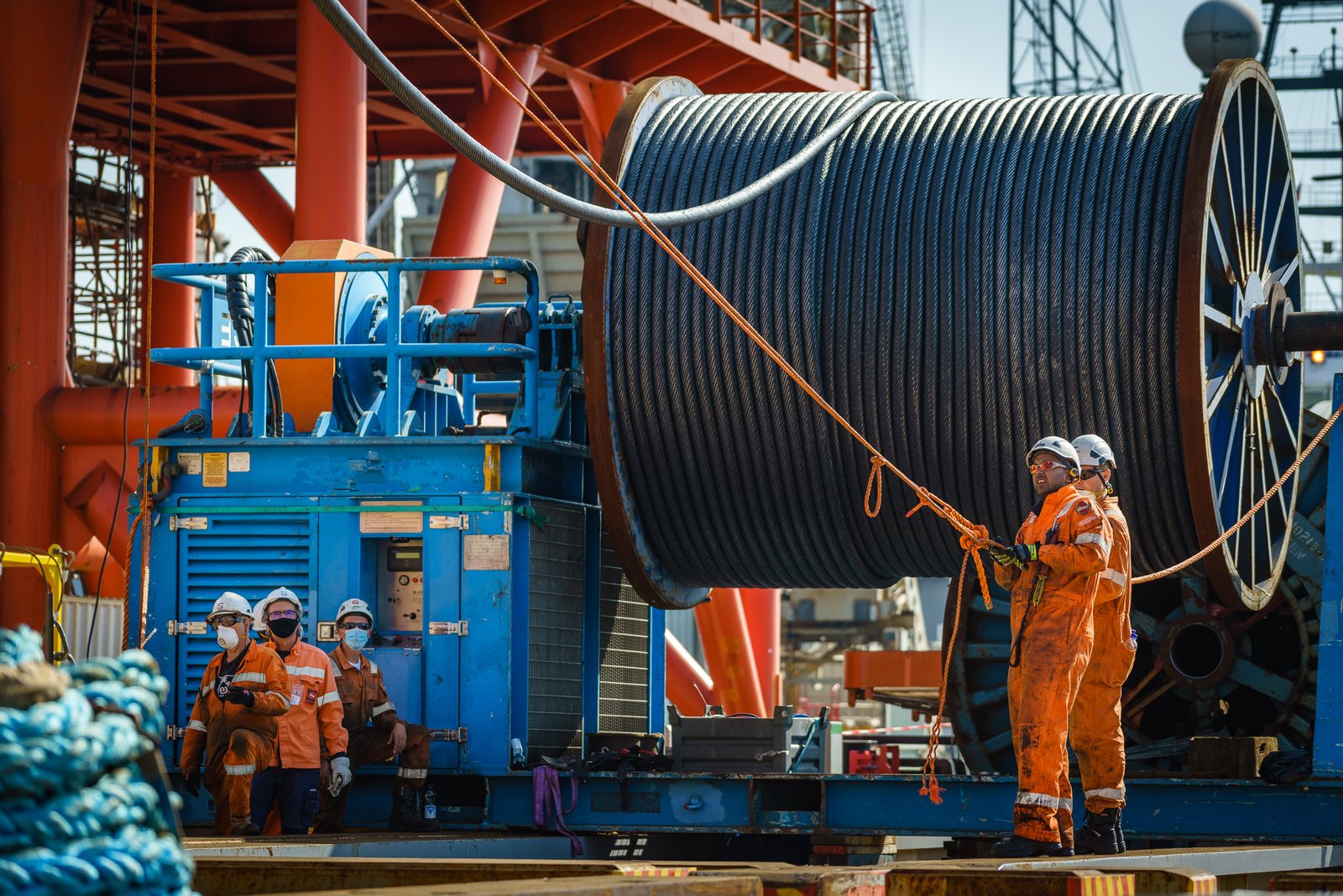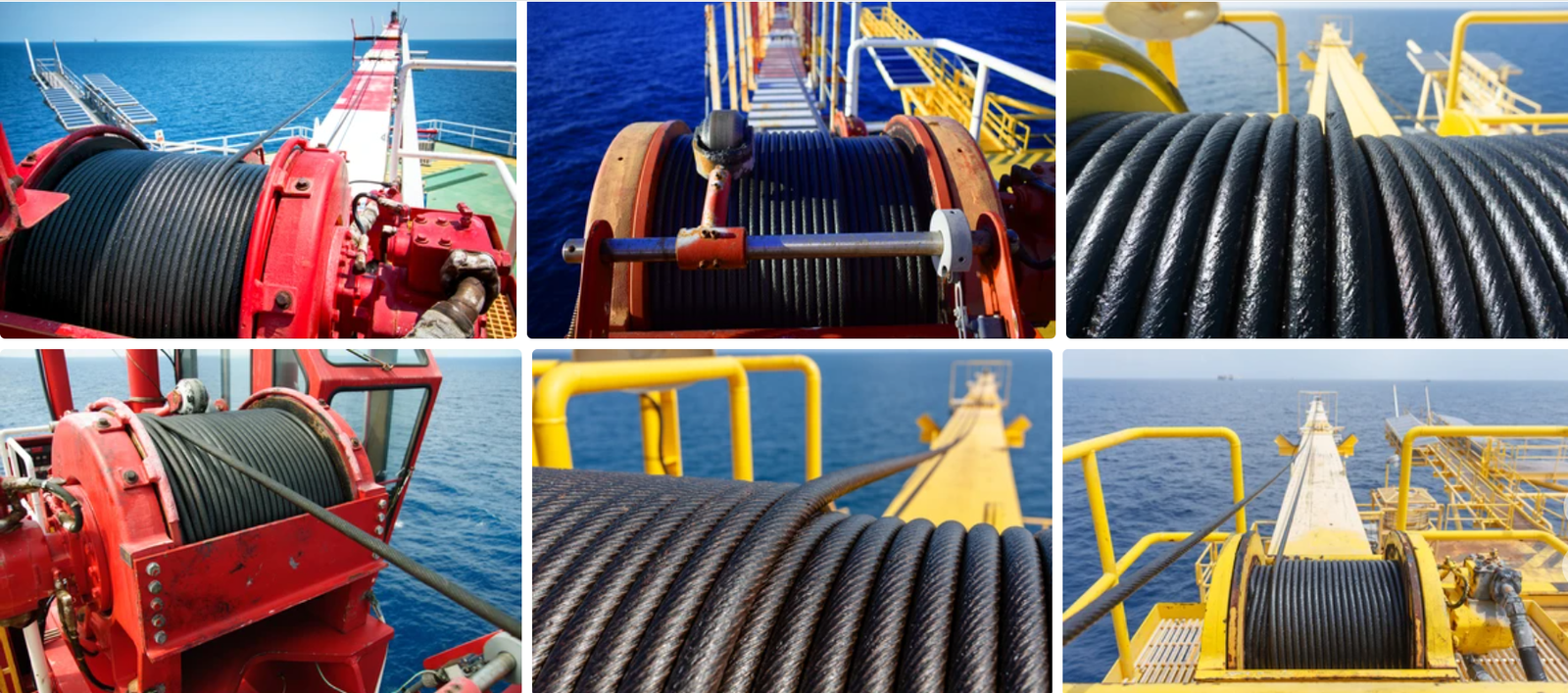Are you struggling to find a safe and efficient way to store your wire rope slings? Improper storage can lead to damage, reduced lifespan, and safety hazards.
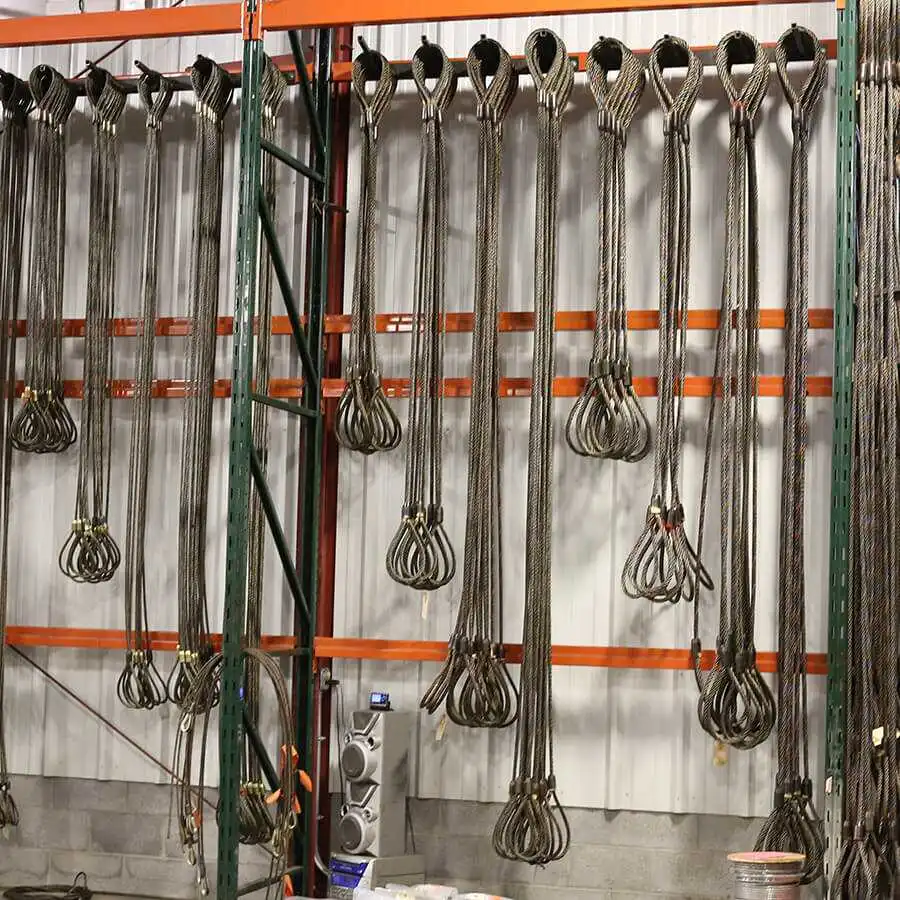
Proper storage of wire rope slings is crucial for maintaining their integrity, ensuring safety, and extending their service life.
I remember a project where a critical sling was found to be corroded and weakened due to being left exposed. It caused a significant delay and a substantial rework cost. That incident really hammered home the importance of diligent storage practices.
How Does Wire Rope Sling Storage Affect Its Lifespan?
The way we store our wire rope slings after use has a direct and significant impact on how long they remain functional and safe. It’s not just about tidiness; it’s about preserving the very strength and reliability that make them valuable tools.
Storing wire rope slings correctly prevents kinks, corrosion, and deformation, all of which significantly extend their operational lifespan and reliability.
Factors Affecting Wire Rope Sling Lifespan During Storage
| Factor | Impact on Sling | Best Practice for Longevity |
|---|---|---|
| Moisture & Environmental Exposure | Leads to rust formation, weakening the steel wires and rope core. This dramatically reduces tensile strength and can cause internal corrosion that’s hard to see. | Store slings in a dry, controlled environment. If condensation is a risk, consider a rust inhibitor spray specifically designed for wire ropes. Keep them off concrete if possible, as concrete can retain moisture. |
| Kinking & Twisting | Permanent bends create stress points within the rope structure. These kinks drastically reduce the sling’s breaking strength, making it unsafe for lifting capacities it once held. | Always coil slings in the same direction as their natural lay. Use large diameter loops when coiling, avoiding sharp turns. Never hang slings by a single eye and allow them to twist. |
| Abrasion & Physical Damage | Contact with sharp edges, rough surfaces, or being dragged can fray individual wires, creating weak spots. This damage can be superficial or go deep into the rope. | Store slings away from any potential abrasion points. Use protective sleeves or padding if slings must be stored in a way that could cause rubbing. Keep the storage area clear of debris and sharp objects. |
| Overloading & Stress Points (Pre-existing) | While improper storage doesn’t cause overloading, it can hide or exacerbate issues that occurred during use. A sling that was already stressed or near its limit will degrade faster if stored poorly. | Always inspect thoroughly before storage and again before next use. Understand the load charts and safe working loads. |
| UV Degradation & Chemical Exposure | While steel is generally robust, prolonged exposure to direct sunlight (UV radiation) can degrade any synthetic components (like fiber cores or sheaths) and some protective coatings. Chemicals can cause corrosion or material breakdown. | Store slings away from direct sunlight and sources of chemical contamination. |
The simple act of coiling a wire rope sling correctly, in the direction of its lay, is a small step that prevents immense damage. A kink is like a permanent crease in paper; no matter how you try to smooth it out, the weakness remains.
What Are the Best Practices for Storing Wire Rope Slings?
When thinking about storing wire rope slings, we need to consider a few key principles to ensure they remain in top condition. It’s about protecting our investment and keeping our operations running smoothly, safely, and predictably.
Best practices for wire rope sling storage involve keeping them clean, dry, protected from damage, and properly organized on suitable equipment.
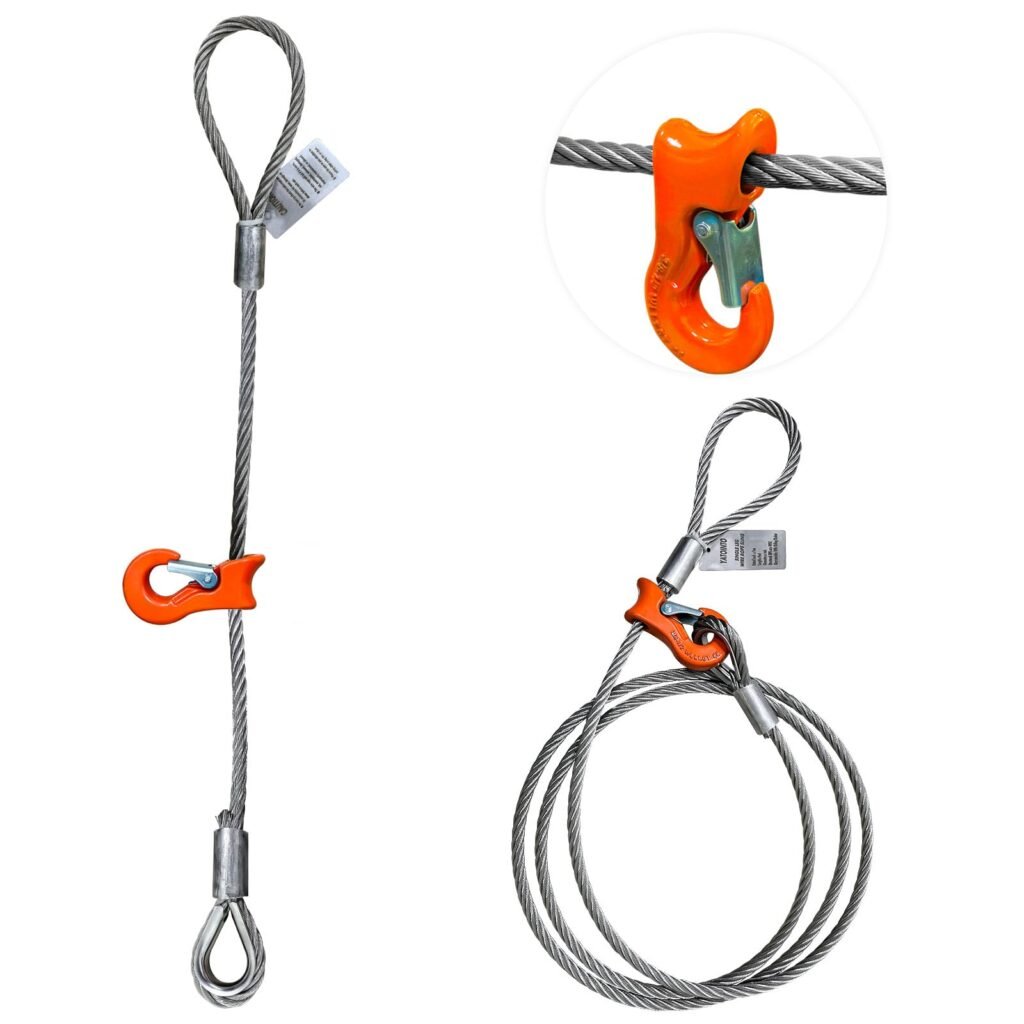
Coiling Wire Rope Slings Safely
| Coiling Technique | Description | Why it’s Important |
|---|---|---|
| Clockwise/Counter-clockwise Lay | Always coil in the same direction as the rope’s natural lay. You can determine this by looking at the strand pattern; if the strands run from left to right up the rope, it’s likely a “right-hand lay” and should be coiled counter-clockwise, and vice-versa. | This is paramount. Coiling against the lay will force the rope to twist upon itself, leading to kinking and internal damage that severely compromises its strength. |
| Large Diameter Loops | Coil into large, gentle loops. The diameter of the coil should ideally be at least 10 to 20 times the diameter of the wire rope itself. | Avoids creating permanent bends and stress points. Tight coils can act like sharp bends, weakening the rope over time and making it difficult to uncoil without damage. |
| Neat and Secure | Keep coils tidy and prevent them from unraveling. Use a mild rope tie or securing strap if needed, ensuring it doesn’t cut into the rope. | This maintains organization, makes slings easier to handle, and prevents them from tangling or becoming damaged by dragging. |

Storage Location Considerations
Choosing the right location for your wire rope slings is as important as how you manage them individually. Location significantly dictates their exposure to detrimental elements.
| Environmental Factor | Impact on Slings | Recommended Storage Solution |
|---|---|---|
| Moisture and Humidity Levels | High humidity and the presence of water are primary culprits for rust and corrosion on steel wires. This can weaken the rope internally, often undetected until catastrophic failure. | Store slings in a dedicated, dry area. This could be a warehouse, a clean shed, or a designated cabinet. Avoid storing them directly on the ground, especially on concrete or dirt floors which can retain moisture. |
| Temperature Extremes | While steel is resilient, very extreme and fluctuating temperatures can impact the elasticity and integrity of the rope’s core or any plastic coatings. | Store slings at ambient temperature. Protection from direct heat sources or freezing is advisable to maintain consistent material properties. |
| Cleanliness and Debris | Dirt, grit, and small sharp particles can become embedded in the rope strands, acting like fine sandpaper, causing abrasion and premature wear. They can also hide structural damage. | Ensure the storage area is regularly cleaned. Keep the area free from oil, grease, chemicals, and other contaminants that could compromise the rope material. |
| Protection from Elements | Direct exposure to rain, snow, direct sunlight (UV radiation), wind, and dust can degrade the rope’s protective coatings, weaken synthetic cores, and introduce moisture and debris. | Keep slings indoors or under a robust, waterproof cover. Ensure the cover allows for some air circulation to prevent moisture buildup underneath. |
I once toured a facility where they stored their wire rope slings right next to a chemical mixing area. Over time, even trace amounts of corrosive fumes had started to affect the slings. It’s a stark reminder that every environmental factor matters.
Using Proper Storage Equipment
Storing wire rope slings effectively often means using the right equipment. This can range from simple racks and hooks to more specialized reels designed for managing long lengths of cable.
Storing wire rope slings on proper racks or reels prevents them from lying directly on the ground, reduces the risk of damage from crushing or abrasion, and keeps them organized for easy access.
Types of Storage Equipment for Wire Rope Slings
| Equipment Type | Key Benefits | Important Considerations |
|---|---|---|
| Coil Racks/Pegs | Keeps slings off the floor, organized, and easily inspectable. Allows for good air circulation around each sling. | Ensure the racks/pegs are made of sturdy material that can support the weight of multiple slings. The pegs should be smooth and rounded to prevent cutting into the rope. The spacing should prevent slings from being crushed against each other. |
| Reels | Ideal for longer lengths of wire rope wire rope manufacturing, as they prevent tangles and kinks during storage and unwinding. Some reels can be mounted vertically or horizontally. | For slings, think of drum-style reels or large wooden spools. Ensure the reel diameter is large enough to avoid creating stress by tightly wrapping the rope. If the sling has end fittings (like eye hooks or thimbles), the reel needs to accommodate them. |
| Storage Cabinets/Bins | Offers excellent protection from dust, moisture, physical impact, and unauthorized access. Recommended for smaller, specialized slings or those with critical applications. | Ensure the cabinet is well-ventilated to prevent moisture buildup. For very long slings, cabinets may not be practical. |
| Wall-Mounted Holders | A space-saving option for smaller slings or individual loops, keeping them off the main floor space. | Like pegs, ensure the holders are smooth and appropriately sized to prevent rope damage. The wall must be strong enough to support the weight. |
When selecting storage equipment, always consider the weight and diameter of your wire rope slings, as well as the available space in your storage area. Aulone, being a leading manufacturer, offers a range of durable, high-quality wire rope slings designed for various applications, and we understand the importance of their proper care.
How to Inspect Wire Rope Slings Before and After Storage?
Regular inspection is a non-negotiable part of ensuring the safety and longevity of your wire rope slings. This process should be a habitual part of your workflow, performed both before they go into storage and again before they are put back into service.
Inspecting wire rope slings meticulously before storage ensures any existing damage is identified and remedied, and re-inspecting them after storage confirms they are in pristine condition and ready for their next task.
Pre-Storage Inspection Checklist: What to Look For
Before a wire rope sling is put away for storage, a thorough inspection is essential. This is your last chance to catch any issues before they potentially worsen or are hidden from view.
- Visual Check for Damage:
- Broken Wires: Look for any severed individual wires. Count them within a specific length (e.g., six rope diameters) and compare with manufacturer specifications. More than a few broken wires in a small section is a problem.
- Kinks: Examine the rope for any sharp bends or deformations that didn’t straighten out properly. A kink is a permanent condition.
- Stretching/Bird Caging: Check if the rope appears distorted, like a bird cage, where wires have popped out. This indicates severe overload or shock loading.
- Corrosion/Rust: Look for reddish-brown rust on the surface or between wires. This indicates internal damage and strength loss, especially if there’s pitting.
- Heat Damage: Discoloration (blue or black) on the rope can indicate exposure to excessive heat, which can anneal the steel and reduce its strength.
- Cuts or Nicks: Any nicks or cuts on the outer wires or the overall rope structure are points of weakness.
- Crushed Areas: If the rope has been run over or squeezed, parts may appear flattened or deformed.
- End Fitting Inspection:
- Eyes/Splices: If your slings have swaged or spliced eyes, inspect the termination points carefully. Look for cracks, wear, corrosion, or deformation.
- Thimbles: If thimbles are used in the eyes, ensure they are not cracked, worn, or severely deformed.
- Tag and Marking Verification: Most slings have an identification tag specifying safe working load (SWL), diameter, and material. Ensure this tag is present, legible, and securely attached. If it’s missing or unreadable, the sling likely needs to be retired.
Post-Storage Inspection Steps: Ready for Duty
When it’s time to use a stored sling again, a quick but thorough inspection is crucial. The storage environment might have introduced new issues or failed to prevent previously minor ones from developing.
- Repeat Visual Check: Conduct the same detailed visual inspection as the pre-storage check. Pay close attention to any areas that might have been obscured during the initial assessment.
- Flexibility Test: Gently flex the sling in your hands. It should feel pliable. If it feels unusually stiff, brittle, or you suspect internal broken wires, it warrants further, more in-depth inspection or retirement.
- Tag Verification: Confirm the identification tag is still in place and the information is still clear.
It’s really about being proactive. Catching a small issue, like a newly forming rust spot or a few more broken wires, before it becomes a major problem can save a lot of trouble, prevent accidents, and extend the usable life of your equipment.
What Are the Consequences of Improper Wire Rope Sling Storage?
Ignoring the proper storage methods for wire rope slings—or worse, thinking it’s not that important—can have serious repercussions. These consequences affect not only the efficiency and cost-effectiveness of your operations but, more critically, the safety of your personnel.
Improper storage leads to premature wear and tear, significantly reduced load capacity, serious safety hazards, and ultimately, increased replacement costs and operational downtime.
Key Risks Associated with Poor Storage Practices
- Reduced Load Capacity: The most immediate impact is the weakening of the sling. Kinks, internal wire breaks, and corrosion mean the sling cannot safely handle the load it was originally rated for. Using it beyond its actual, current capacity is an invitation to failure.
- Severe Safety Hazards: A damaged sling can fail unexpectedly during a lifting operation. This failure can cause severe injury or death to nearby workers, damage to property, and costly structural damage to the lifted load or surrounding equipment.
- Increased Operational Costs: Continuously replacing damaged slings due to poor storage adds significant, unnecessary costs to your business. It’s an expense that can be largely avoided with proper diligence.
- Costly Operational Delays: When a sling fails or is found to be unsafe due to poor storage causing damage, your operations come to a halt. You then face the cost of waiting for a replacement sling, potentially impacting project timelines and client satisfaction.
- Compromised Certifications and Compliance: For many industries, equipment must maintain certain certifications (like ABS, DNV, CE, etc.). Improper storage and maintenance can invalidate these certifications, leading to compliance issues and potential legal repercussions.
- Difficulty in Inspection: Slings stored in a haphazard manner, tangled, or dirty are much harder to inspect thoroughly. This increases the chance that hidden damage is missed, leading to its unsafe use.
Preventing Damage Through Good Storage Practices
We can effectively prevent these serious risks by implementing simple, systematic storage procedures. It’s about creating a culture where equipment care is prioritized.
Adopting systematic storage practices, such as using appropriate racks, coiling slings correctly, and maintaining a dry, clean storage environment, is the most effective way to prevent damage and ensure sling safety.
Conclusion
Proper wire rope sling storage is essential for safety, longevity, enhanced performance, and cost-effectiveness.


